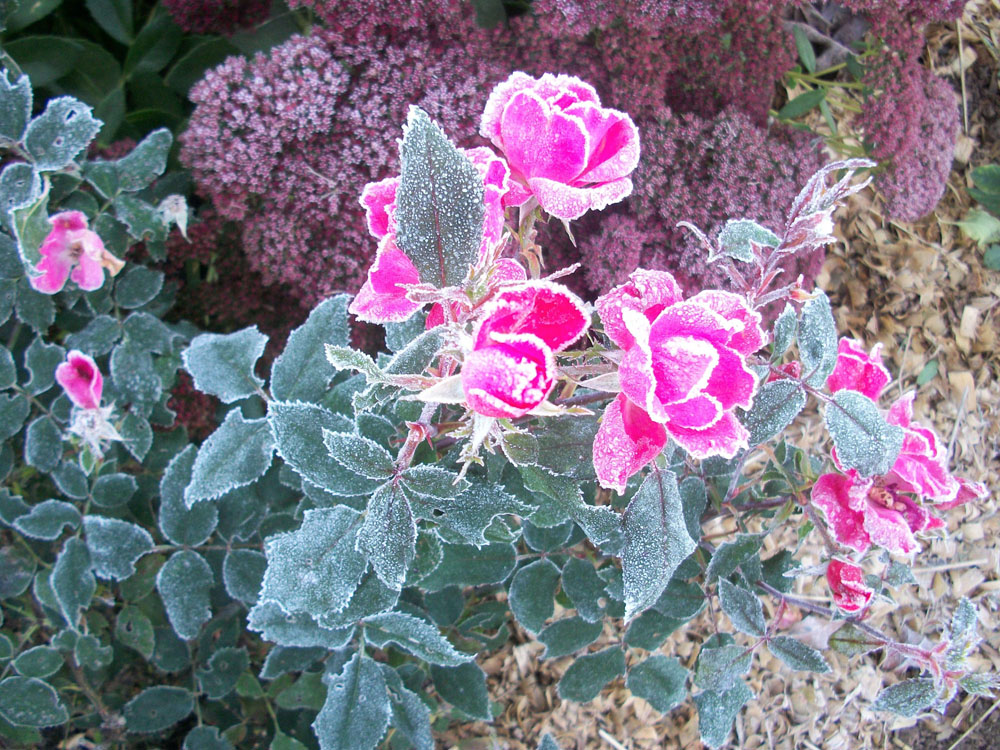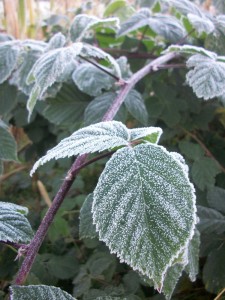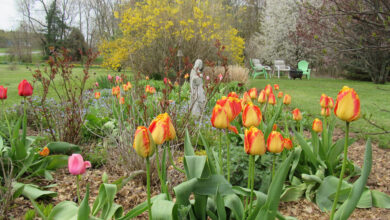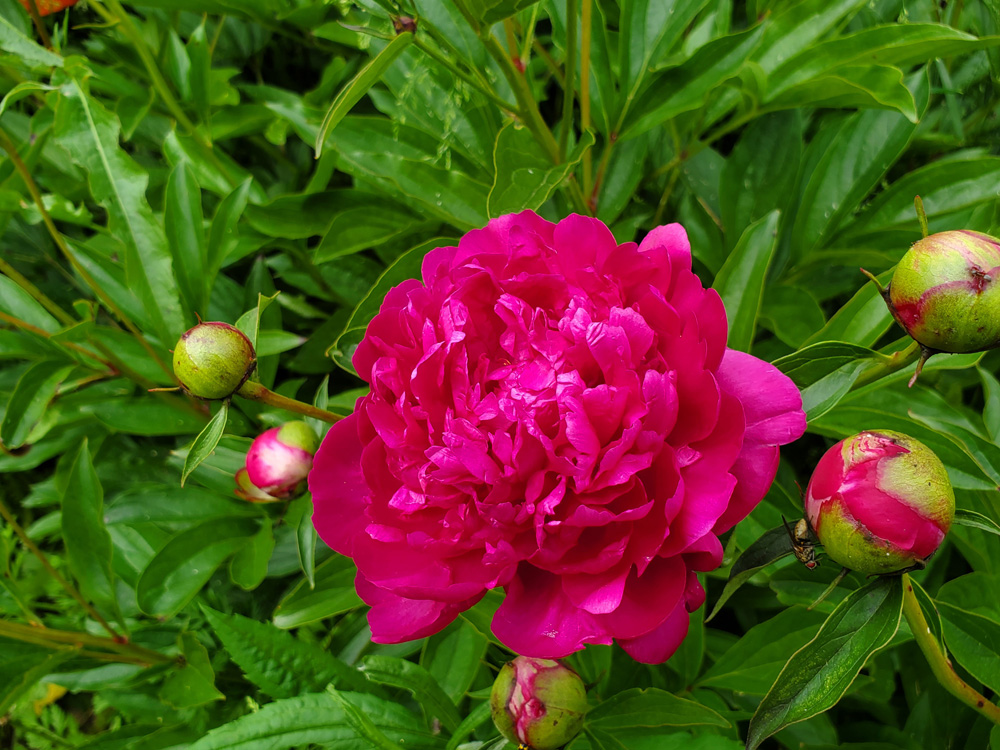Frost visits the garden

This is a column about that dirty f-word in gardening – Frost. We had the first frost in our garden during the beautiful Columbus Day weekend. It was predicted by the weather folks and because I know my yard tends to be a “cold spot” I felt an urgency to finish up harvesting and get whatever I could on the porch for protection.
I spent most of the Saturday, October 11 afternoon working to get those tasks accomplished. The cool, dry and calm conditions certainly made it feel like frost was imminent. Because it is late in the season, I didn’t try to protect anything with covers, but there was still plenty of pumpkin and winter squash harvesting to do.
My son and I carted several loads of pumpkins and squash to the porch where they are currently making a very lovely autumn display. I also picked the last of the green beans and sweet corn (which we enjoyed with dinner) as well as sweet peppers and eggplant. Carrots can stay in the ground into the winter and the Swiss chard also holds up to some cold. My tomatoes are way gone and I let the broccoli bolt a while ago.
The cut-flower portion of the garden was also on my to-do list. I picked the last of the celosia and gomphrena. I dry the flowers in my garden shed and use them at Christmastime for decorating with evergreens. I finished up my pre-frost work by carting a few potted plants to the porch.
By Sunday morning, the thermometer on the porch had dropped to right around 32 degrees F. Jack Frost had obviously made a visit. We had frost on the cars, the roof, the lawn and all through the gardens.

Technically the “growing season” has ended for me, which is sad, but time spent on the care of tender plants can now be turned to other chores – cleaning up perennial beds, planting spring bulbs and putting up Christmas lights – just kidding on that last one – sort of!
The subject of frost and how and when it forms is an interesting (and vitally important) one for gardeners. Frost warnings late in spring can be very disturbing for back-yard gardeners and large-scale growers alike, as they threaten major crops.
In the fall, they can wreck havoc if they come unexpectedly early. For example, I’ve had killing frost in parts of my yard when temperatures have been in the mid-30’s.
According to Cornell Cooperative Extension, our first autumn frost is typically a radiation frost, meaning that it occurs when the temperature drops below 32 degrees F under clear skies and calm conditions. Radiant heat from the Earth rises into the upper layers of the atmosphere and the cold air sinks.
I’m sure many of you have not had a killing frost yet, as topography and micro-climates – even within a backyard – can vary from place to place and affect where frost will form. The bottom of slopes and high altitudes where temperatures are colder are likely to get hit with frost even when hillsides are frost free.
Temperatures around your own house can also vary and trees can provide some frost protection.
“If it is cold enough to break cell walls or disrupt cell constituents beyond repair, damage, wilting and death will occur in affected tissues,” Cornell Cooperative Extension states. They also say that frost will not always cause this degree of chilling within plant tissue – something else I’ve noticed in my own yard …. sometimes it’s a heavy frost, sometimes it’s light and many tender plants survive.
Because the weather can be – and usually is – very beautiful following the first radiation frost, Cornell also offers these tips for minimizing the effects:
•Charts are available online to find the average first fall frost date in your area.This helps you to plan ahead. Stay informed with weather forecasts and conditions – cool temperatures, clear skies and low humidity can signal frost is imminent.
•The full moon does not appear to increase the chance of frost.
•Harvest tender veggies early – tomatoes can ripen inside, for example.
•Simply watering your plants can help in two ways:
1). Studies show air temperature above wet soil is 5 degrees F higher than dry soil.
2). As water freezes, it releases heat – watering plants during a frost can keep internal temps from freezing. The best time for watering during a frost is when it’s coldest – just before dawn – so set your alarm and be glad the sun rises later at this time of year!
•Covering plants, especially with woven fabrics, provides great protection. Cornell advises it’s better to support the covering on stakes and to apply the cover in late afternoon before a frosty night.
I hate to see my annuals – especially those gorgeous begonias – be killed by the first frost of the season – but soon the entire landscape will be hunkering down for winter and I know I will continue to enjoy the golden autumn days working outside on those final gardening chores before the snow flies.
K. Gabalaski photos






